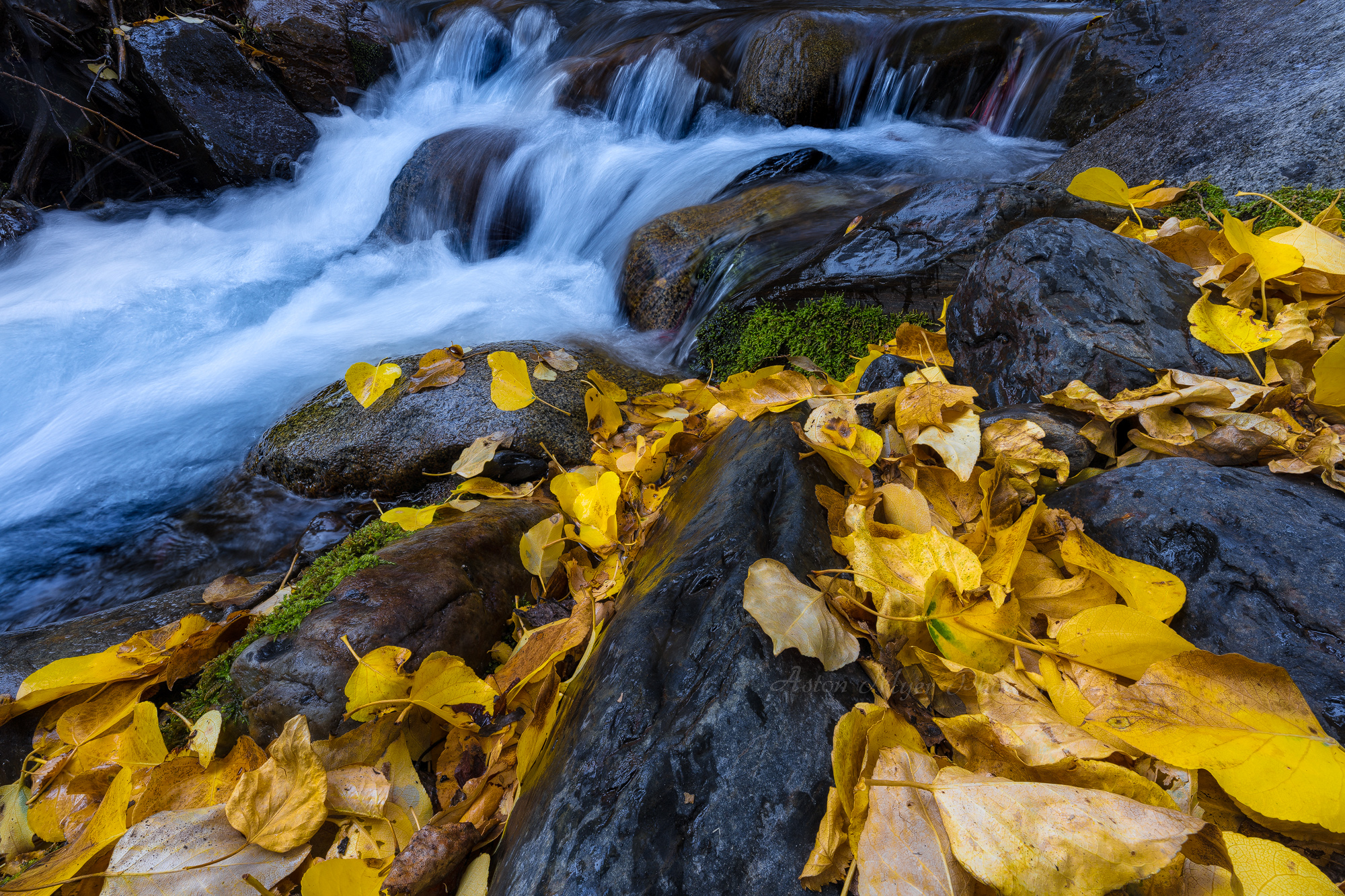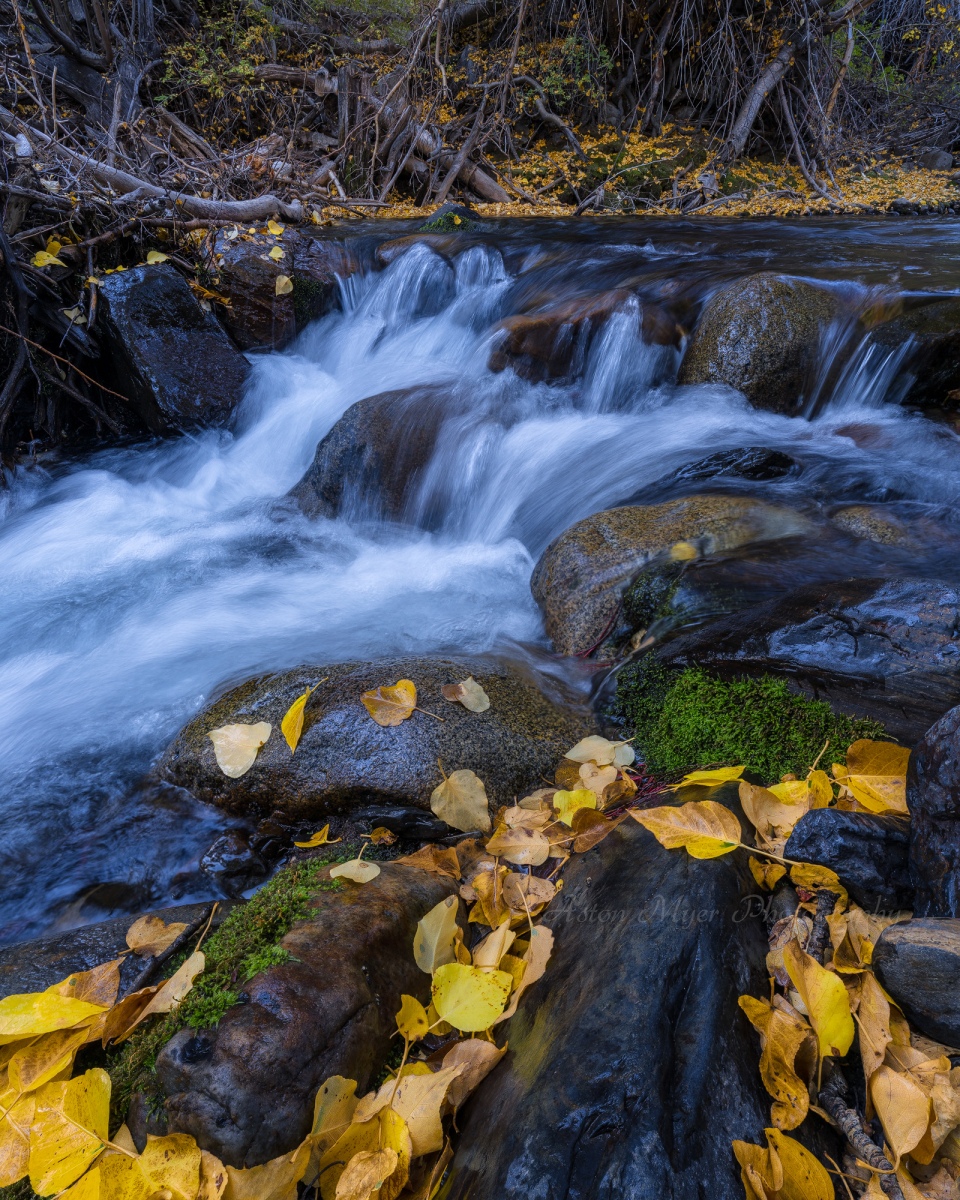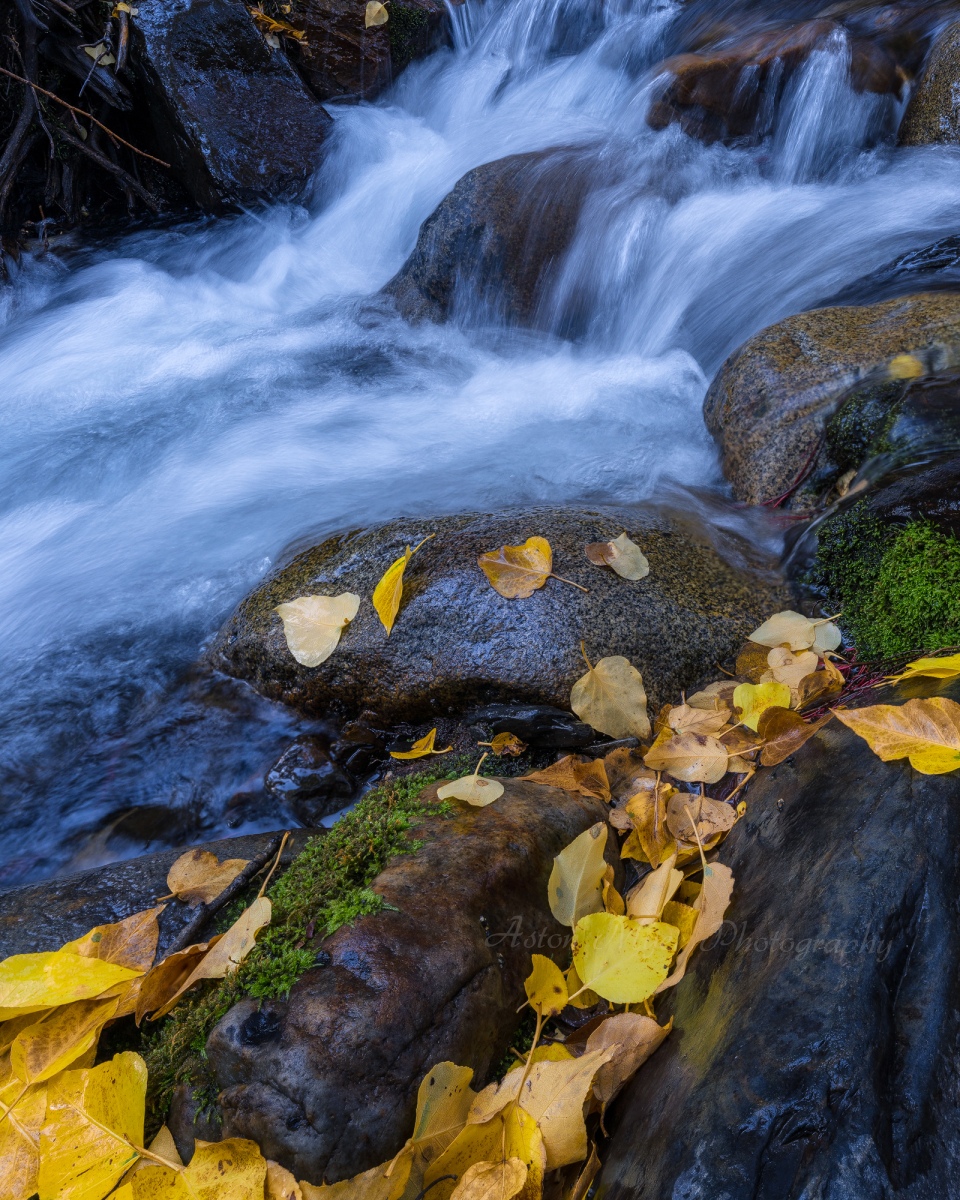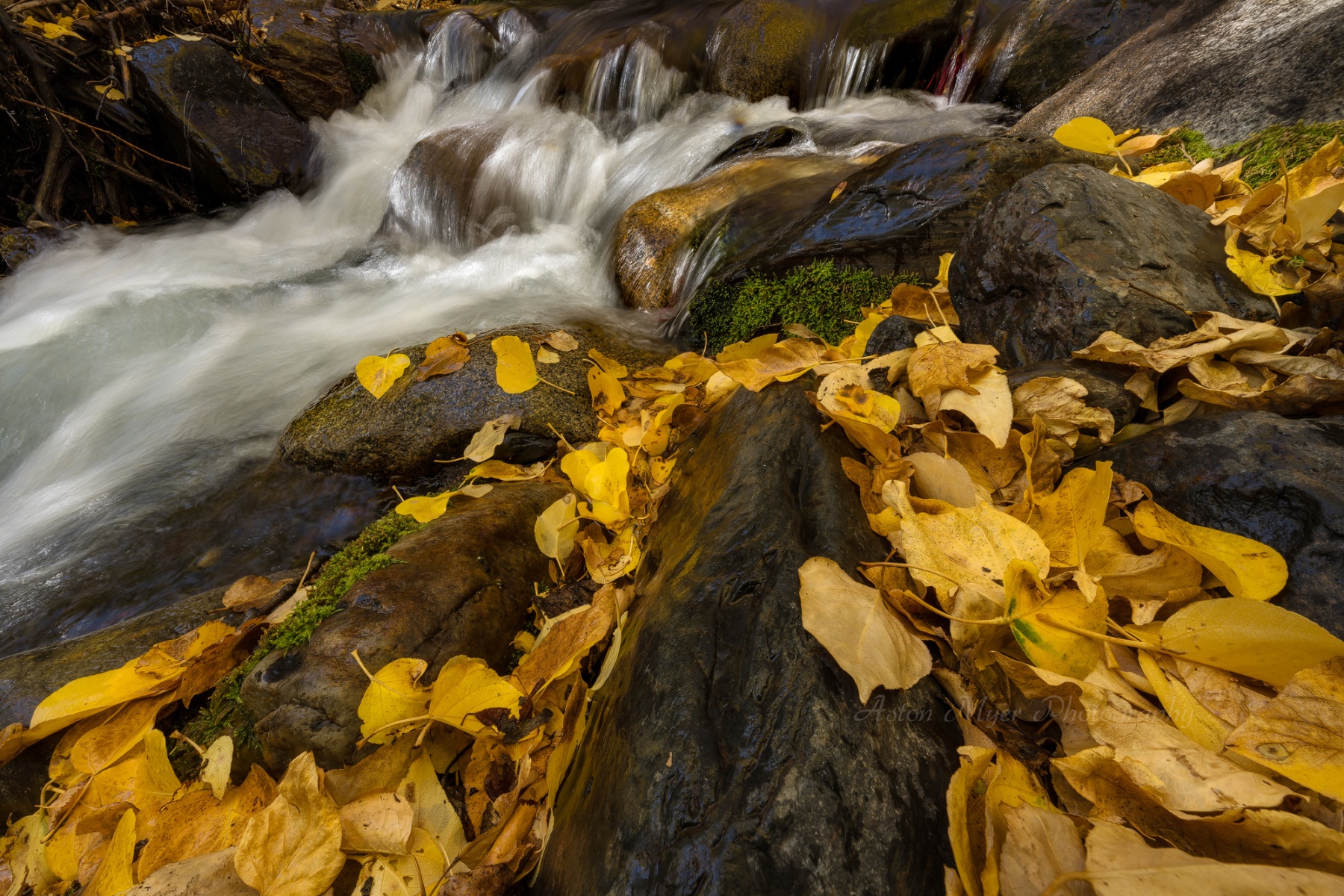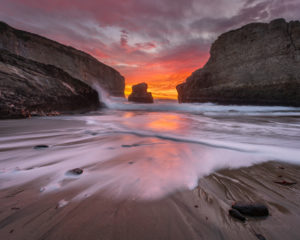I’ve found photographing fall color in the Eastern Sierra to be incredibly challenging. Granted I’m somewhat new to it because getting out to shoot fall color in October during the regular school year was difficult. The challenge is finding a subject that stands out since a sea of yellow doesn’t make for a compelling composition. Shooting grand landscapes with a sea of fall color is great, but the number of dynamic cloudy days while color is best is often too small. One of the classic approaches to fall color is a creek image where the warm colors of the tree leaves contrast with the cooler color of the water.
I have several go-to spots at a variety of creeks, but this one was new to me this year. This area was mostly cottonwood trees, so the leaves have a much waxier and brighter color than typical aspen leaves. The rocks along the creek were collecting downed leaves, so I decided to frame the scene with the downed leaves as the main subject with the cascades as a secondary interest. This scene was on my way out from a disappointing sunrise, so I spent about twenty minutes playing around with composition, but the goal was to find a leaf shape that mimicked the flow of the water. I came home and processed the image (10 images for focus stacking to deal with the fact that the tripod was as low as possible to emphasize the leaves), and felt that it was ok, but not great.
Rather than agonize about it, I put it out of my mind for a few days and returned to the processed image. Dori felt that it was too busy with the portion of the image above the cascades, so I started playing around with the cropping to pare it down to the fundamentals, the shape of the downed leaves, and the cascades. I came up with a few potential crops, but I like to preserve pixels as much as possible for printing and the crop was severe.
It was about 8:00 am, and the sun is behind a steep mountain until after 9:30, so I decided to try again and booked it back to this spot. The leaves were looking very similar to when I left them a few days ago, but the downed leaves had accumulated more and filled in some gaps. I decided to play around with a landscape orientation image with the leaves producing a flowing shape in the foreground. I liked it, but I decided to wait around until the sun crested to see if I would like the warmer light better. I did come out to this spot, so I figured I may as well collect images with both kinds of light just in case.
I busied myself looking for small details (none of which amounted to anything), tried to keep from slipping or dropping a lens on the waxy leaves, and hit my head on a horizontal aspen tree that I forgot was right above me. Then the light came. The color temperature (and the air temperature, too) increased dramatically from the sunlight filtering through the trees above me. I moved back into position and photographed the scene again, and the direct light made it much more complicated. There were some very bright spots on the cascades as well as a rock in the upper right that wasn’t ideal.
I returned home to edit the new images, and I found the shape of the leaf cascade compelling. It wasn’t as simple as before with the leaves and the cascades mimicking each other, but I found my eye making a pleasant loop around the image as it followed the leaves flowing into the water and back again. I edited down the hot spots in the warm image and found it acceptable, but the cooler colors of the rocks and water in the shade served as a much nicer warm-cool color contrast.
